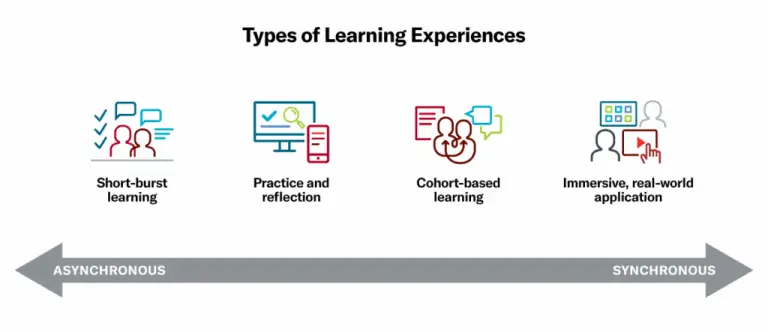Generative AI. E-commerce. Remote and hybrid work. Sustainability. Workplace equality. Social media. All these developments (and more) have rocked the business world in the last five years, immeasurably changing nearly every industry. Organizations must respond to changing market events rapidly – or fail.
And who drives this response? Organizational leaders. Yet leaders who can navigate the complexities of modern work environments rarely appear out of nowhere; they are cultivated through ongoing professional development that’s both nurturing and practical.
Our research found that employee trust in senior leadership is 63% favorable, and there is a significant correlation between trust and various employee experience outcomes such as engagement, inclusion, wellbeing, and exceeding expectations.
By investing in excellent leadership development programs, organizations create a culture of trust, enhance employee (and therefore customer) experience, and drive success for the business in the long term – to face whatever commercial and geopolitical challenges inevitably come along.
What is leadership development?
Leadership development is a strategic process that includes programs of learning solutions aimed at improving the skill sets, abilities and confidence of current business leaders, and bringing on the company’s next generation of future leaders.
Each organization will have its own unique leadership development requirements. Learning experiences need to align with the organization’s specific values, priorities and challenges.
To be effective, leadership development programs must:
- be relevant and engaging for different leadership levels, from senior executives to frontline leaders
- focus on key business outcomes such as revenue increase, cost efficiency or risk management
- be continuously assessed, using feedback to measure: progress, impact on the business, and the effectiveness of the program itself.
Free eBook: Develop your leaders through 360 degree feedback
Why is leadership development important?
Leadership development is essential for businesses to be agile in their response to changing markets, technological developments, and external situations; well-prepared leaders can see what’s coming down the road and prepare responses accordingly.
Good leadership development also helps attract and retain top talent. The best people strive to learn continuously, enhance their hard and soft skills, become more qualified, and tackle more interesting challenges.
And these people grow into the successful leaders of the future. Through training programs and experience offered by leadership development programs, they are not afraid to innovate, make long term strategic plans, and take the right decisions for the benefit of the organization.
What is a leadership development program (LDP)?
You want the people you carefully selected and recruited to grow in their careers and progress through your organization.
Effective leadership development programs (LDPs) are structured initiatives aimed at developing the skills leaders need to manage their careers, lead others to success, and contribute to the organization.
Expectations of 21st century leaders are high:
[I think this graphic still accurately reflects contemporary challenges for leaders]
If a rising tide lifts all boats, then creating a leadership development program benefits everyone. Great leaders drive higher team engagement and produce better business results. This means leadership development is an essential part of employee experience.
Who should attend a leadership development program?
The short answer is: anyone who wants to. According to Shakespeare, ‘some are born great, some achieve greatness, and some have greatness thrust upon them’. It’s important that your organizational leaders have the ambition to want to make that shift into leadership training and professional development.
A ‘wild card’ employee who shows willingness and ambition to develop themselves professionally and personally may blossom and make a better business leader than one who is dutifully plodding up the career ladder to senior leadership because that’s what is expected of them. They may also demonstrate more self awareness and emotional intelligence.
Willingness goes hand in hand with a more ‘can do’ culture, and the positive employee experience that results from a company like this contributes to overall employee wellness.
As well as self-starters who want to put themselves forward for leadership development, other employees to train up in leadership abilities include:
- Current managers and senior leaders who need to develop their leadership style and keep up in a fast-paced business environment.
- People recently promoted to management positions for executive development.
- People with new leadership responsibilities perhaps because of expansion, merger, navigating change, or reorganization.
- People facing new challenges managing staff, the pace of change, communication skills or technology.
- Aspiring mid level leaders who demonstrate potential.
- Young professionals in the early stages of their career – to gain a deeper understanding of a business, while developing leadership skills, to be fast-tracked to a management role.
Remember, the key here is a willingness to become a better leader.
1. Alignment: understand your company’s priorities
What is the key business priority you need leadership development for?
No two organizations are the same, which means your reason for launching a leadership development program will be unique. It’ll depend on where your company is right now and where it sees itself in the future:
- Are you in growth mode? You need leaders with drive, ambition, and great ideas for advancing the company.
- Are you in cost-cutting mode? You need leaders who are flexible, resourceful, and able to communicate effectively.
- Are you struggling with retention and engagement? You need leaders who inspire, communicate effectively, and can drive behavioral changes.
Understanding your company’s priorities and how they align with the capability and training needs of your leaders will allow for greater opportunities to target these needs within the context of your program.
2. Goals: What do you hope to achieve?
Focus on three areas: the learner experience, on-the-job performance and organizational outcomes
Establish small and large goals that contribute to the greater good of the entire organization. Assess the resources in your teams, set realistic goals based on those resources and assign tasks to individuals so that everyone is working towards those goals.
3. Assessment: the current state of play
Define what leadership means to your organization and what it will look like in practice. Consult your leaders and potential leaders, too.
Send a short survey asking them what they consider to be important leadership qualities for the company to succeed.
However, don’t just rely on expertise within your current leadership group. This can lead to the same ideas, behaviors, and qualities circulating again and again, and can prevent an organization from growing. This is especially true in older organizations, where there can be a tendency to do things ‘as we’ve always done’ and hire people ‘who fit in’.
4. Executive involvement: sharing the knowledge
Once you’ve agreed on a set of leadership qualities, you can compare your current crop of leaders against them. Begin to reach out to willing executives and senior leaders to get them involved with training and mentoring up and coming leaders of the future. Ask them where they think the company should be in 5, 10, or 20 years, and outline how they think leaders could succeed within that framework.
One way to assess your current leaders is to run a 360 development program. These help you get a fuller picture of whether they’re demonstrating leadership qualities to their peers, direct reports, and own managers. It’s why more than 85% of all Fortune 500 companies use 360 development.
5. Create: personal development plans (PDPs) with leaders
For your current crop of leaders, you might create personal leadership development plans tailored to the specific qualities they need in their role and their current strengths and weaknesses. These plans should develop personal growth only, not be seen or used as corrective measures.
If you’re lucky to have talented leaders, emphasize the importance of building on strengths. Standing still means getting overtaken at some point, so leaders should focus on remaining at the top of their field and being a beacon for other employees in their organization.
6. Implement: a wider leadership development program
Even after 30 years, the most popular structure for leadership development programs remains the 70-20-10 rule. That is:
- 70% on-the-job learning, with challenging assignments and opportunities
- 20% mentoring, where other leaders share their expertise
- 10% training, that challenges and stretches them
Most business schools agree that this mix of learning methodologies matches the mindset of most leaders, who’d prefer autonomy and responsibility over sitting in a classroom learning how to lead. However, not all experiences are created equally.
It’s important to identify the experiences that offer the most learning. This should be based on their individual needs, and may include short-burst learning, practice and reflection, cohort-based learning and immersive, real-world application.

Image: https://www.harvardbusiness.org/how-to-create-a-successful-leadership-development-program/
For high-potential leaders, or those early in their careers, you could consider rotational programs. This is where employees spend time with different departments, learning a variety of leadership skills and getting a better understanding of how the business units intersect and collaborate.
7. Evaluate: the leadership experience
This is the essential part of 21st-century leadership development. You need to know where your leaders are currently at, and identify where they need to improve and grow.
So that your leaders themselves do not stagnate in the ‘curse of expertise’, powerful performance management tools such as Qualtrics Employee XM help them reach their full potential. These offer real-time, AI-driven solutions to enhance performance development. Including built-in 360 surveys, these tools can help leadership set goals, gather data, measure results and share insights in a transparent way.
8. Measure: the impact of your program using feedback
Like any program, you need to measure its effectiveness and the ROI. But also remember that for leaders, autonomy and trust are two of the key drivers to job satisfaction. So how do you meld the two requirements of trusting leaders and monitoring their progress?
One way of doing it is having the leaders in the company act as mentors – giving advice and feedback on the progress of more junior leaders. All with the subtext that one day the more junior leader could be a mentor themselves.
You can also leverage 360 feedback to understand how the leader is developing in the eyes of their colleagues. Do direct reports notice a difference? Do peers recognize emerging leadership qualities?
Most importantly, it’s crucial that feedback is actioned. The results of the feedback can be used to act to close developmental gaps and nurture leaders.
Top leadership skills to teach in a development program
Time was, top desirable leadership skills included goal setting and planning, communication, negotiation, delegation, conflict management and team building. Following the upheavals of the early 2020s, these skills are regarded as baseline necessities for leaders, even sounding positively quaint now.
Now, the demands of leadership extend to:
Agility
Leaders need to be ready for the next black swan event to come along, and manage the resulting volatility, while maintaining the long-term company vision.
Digital competence
With generative AI used in nearly every industry, leaders need to understand the implications of technological change and harness the power of digital tools effectively for the good of the business.
Innovation
Leaders are being asked to do more with less, so they need to think creatively and innovate, while ensuring continuous learning keeps up with the innovation.
Inclusivity
Diverse companies have a 39% increased likelihood of outperformance for those in the top quartile of ethnic representation versus the bottom quartile. Leaders who champion inclusive practices that value and integrate diverse perspectives are delivering business success.
Collaboration
Successful businesses rarely operate in silos; today’s leaders must be able to collaborate across all departments and business functions to drive success holistically.
Talent nurture
Good leaders are now expected to ‘pay it forward’, passing on their expertise, knowledge, and even leadership style to new leaders, ensuring a strong future talent pipeline.
How Qualtrics can help with leadership development
We offer a range of tools and insights to support leadership development, particularly on our Employee Experience (EX) platform:
360-Degree feedback
Leaders can receive structured feedback from peers, subordinates, and supervisors, helping them refine their skills and improve their effectiveness.
Employee engagement insights
By analyzing employee sentiment and engagement, we help leaders understand how their actions impact company culture and trust.
Strategic leadership tools
The platform offers resources for developing essential leadership skills, such as communication, motivation, and strategic thinking.



